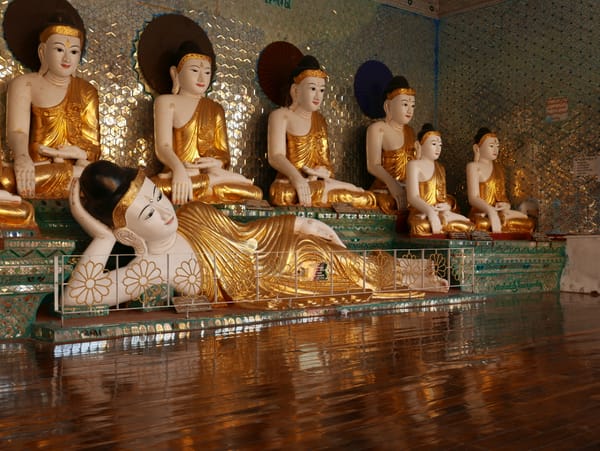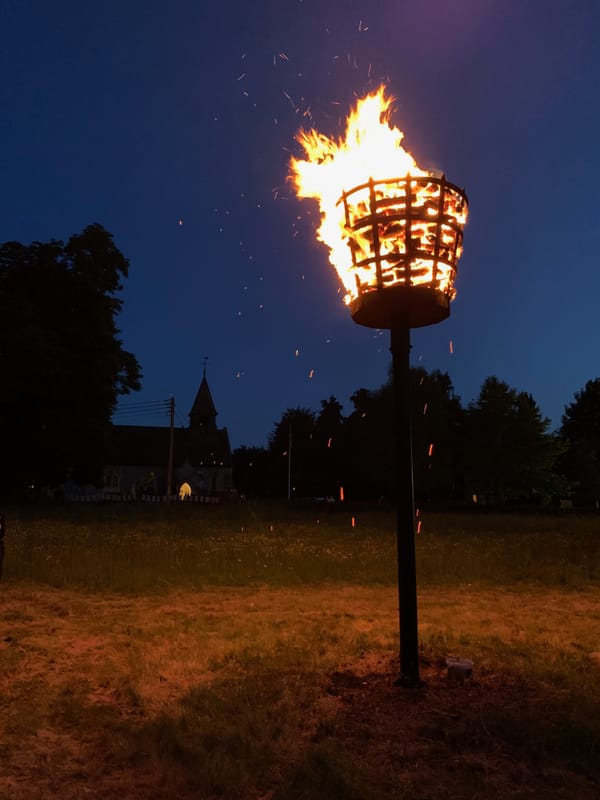Myanmar (Burma) — Why is there rampant gum disease in Myanmar (Burma)?
It is not as it appears — betel quids
March 2015
The first day I was in Mandalay, Myanmar (Burma), I was shocked at the level of gum disease I saw. I kept seeing people with stained teeth and gums. Terribly stained teeth and gums. And it looked like some of them were bleeding. Then I realised. It was betel quid chewing that was causing the stains and the red spit.
Betel quids consist of areca nuts (also called betel nuts) and tobacco wrapped in a slaked lime-coated betel leaf.
Sounds delightful!
And it is incredibly popular, with sellers on most street corners. The photo below is of one such seller. The pot of white stuff is the lime.
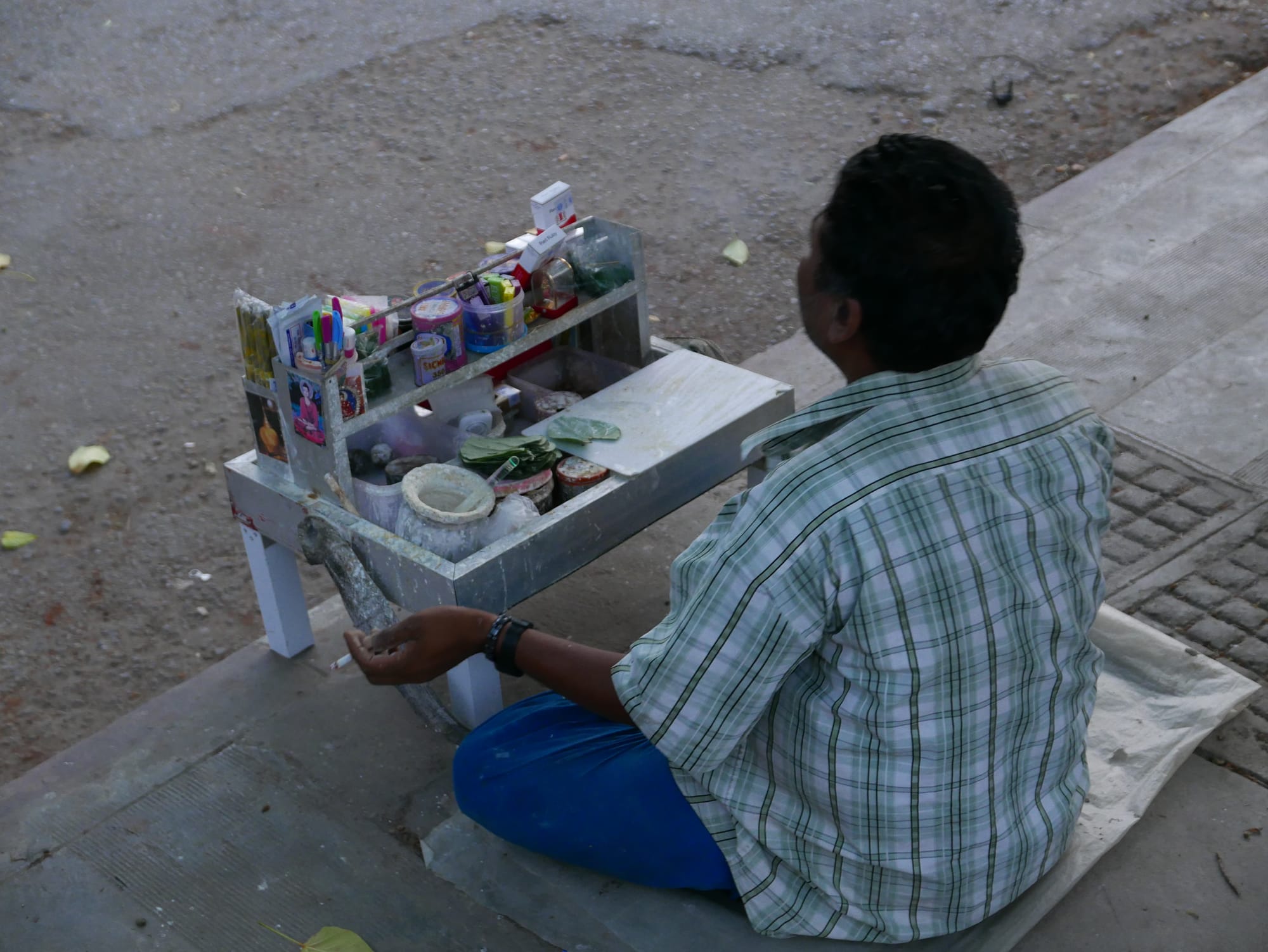
A betel quid seller preparing for a busy evening. That is a lot of leaves.
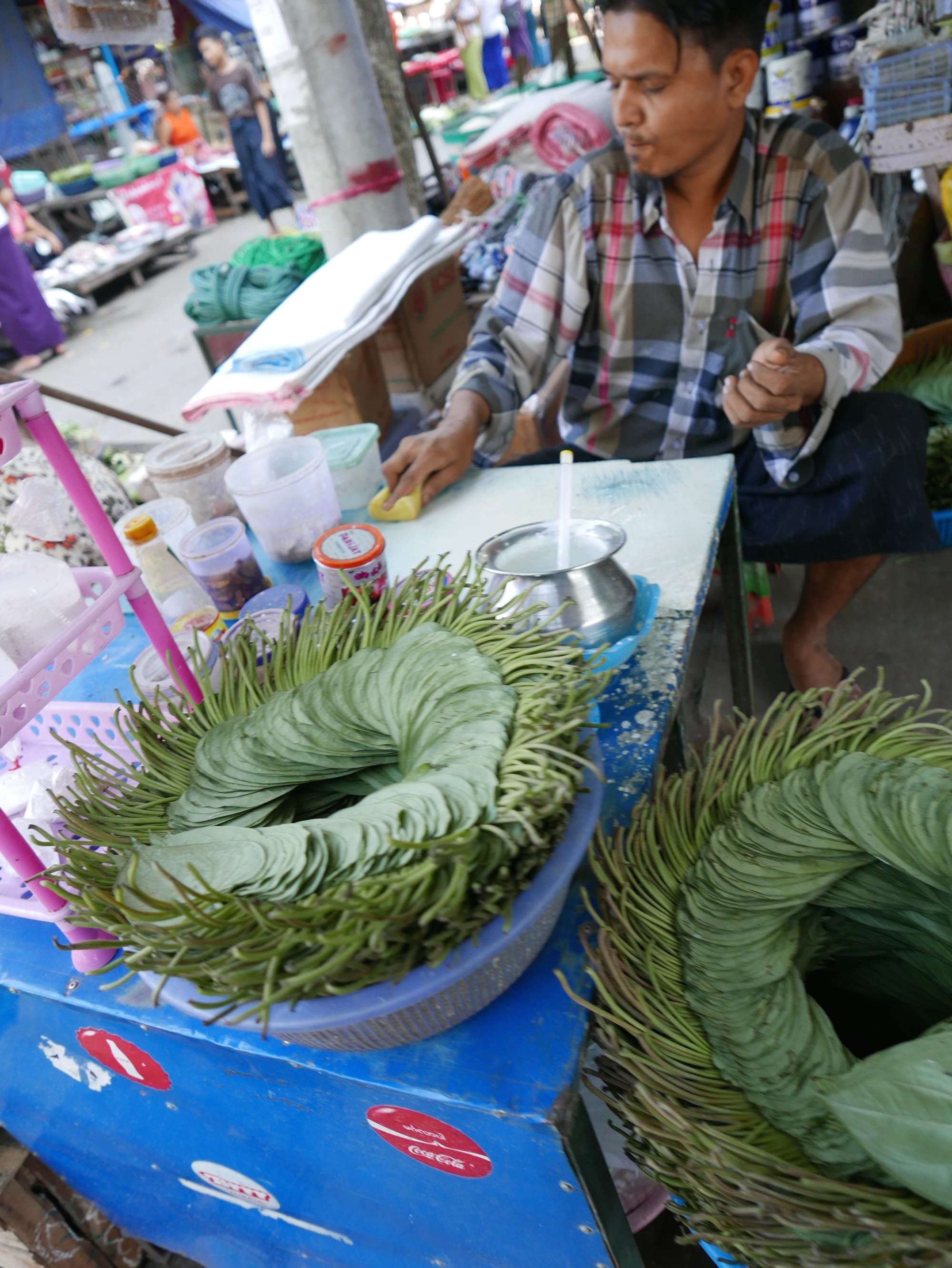
The betel quid is shown in the photo below.
The quid consists of a betel leaf (the green heart-shaped leaf) covered in slaked lime (the white paste). The leaf is then sprinkled with tobacco (brown flakes) and areca nuts (the brown and white bits in the image). This is then rolled up and chewed.
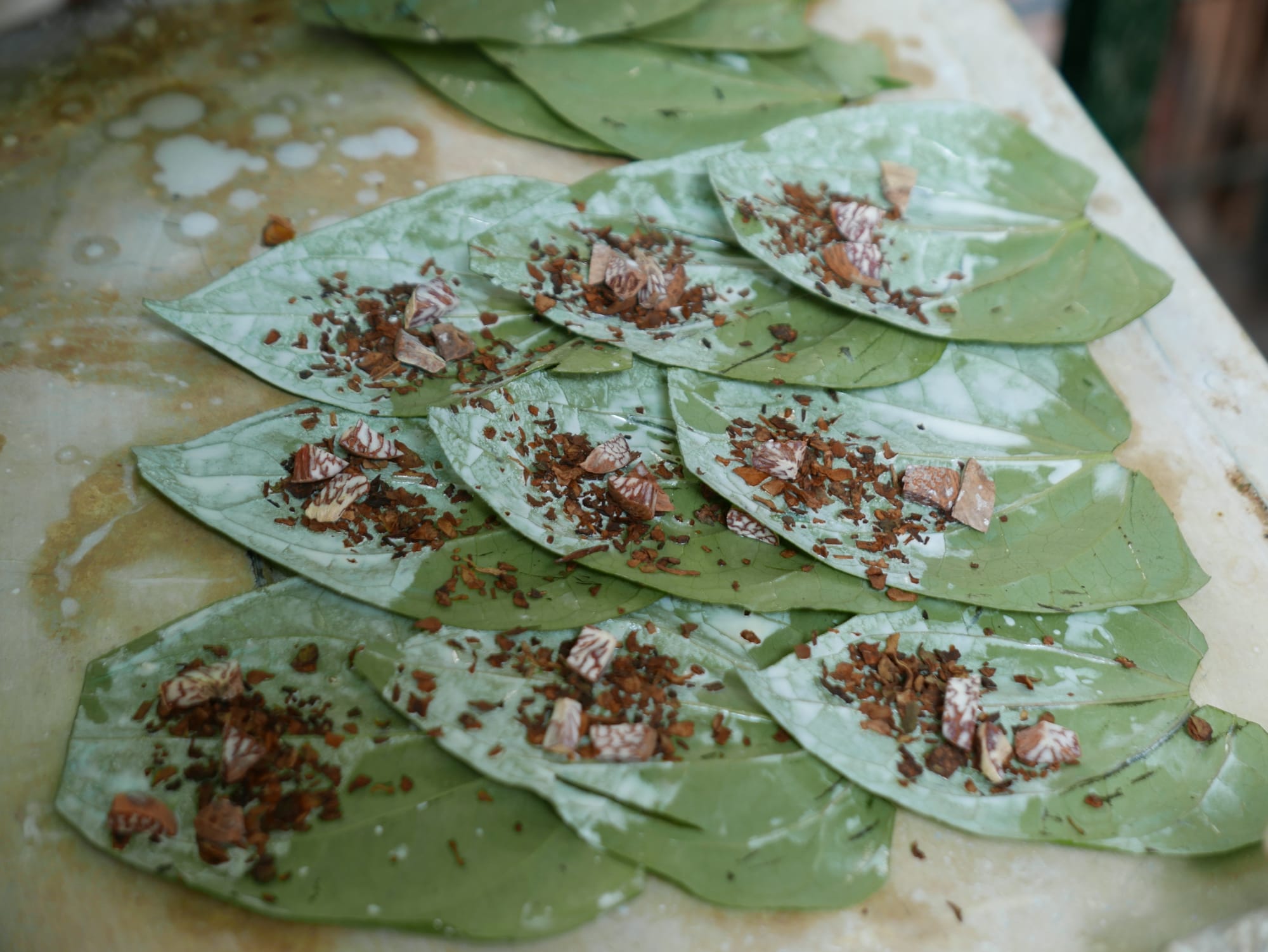
Another betel quid seller.
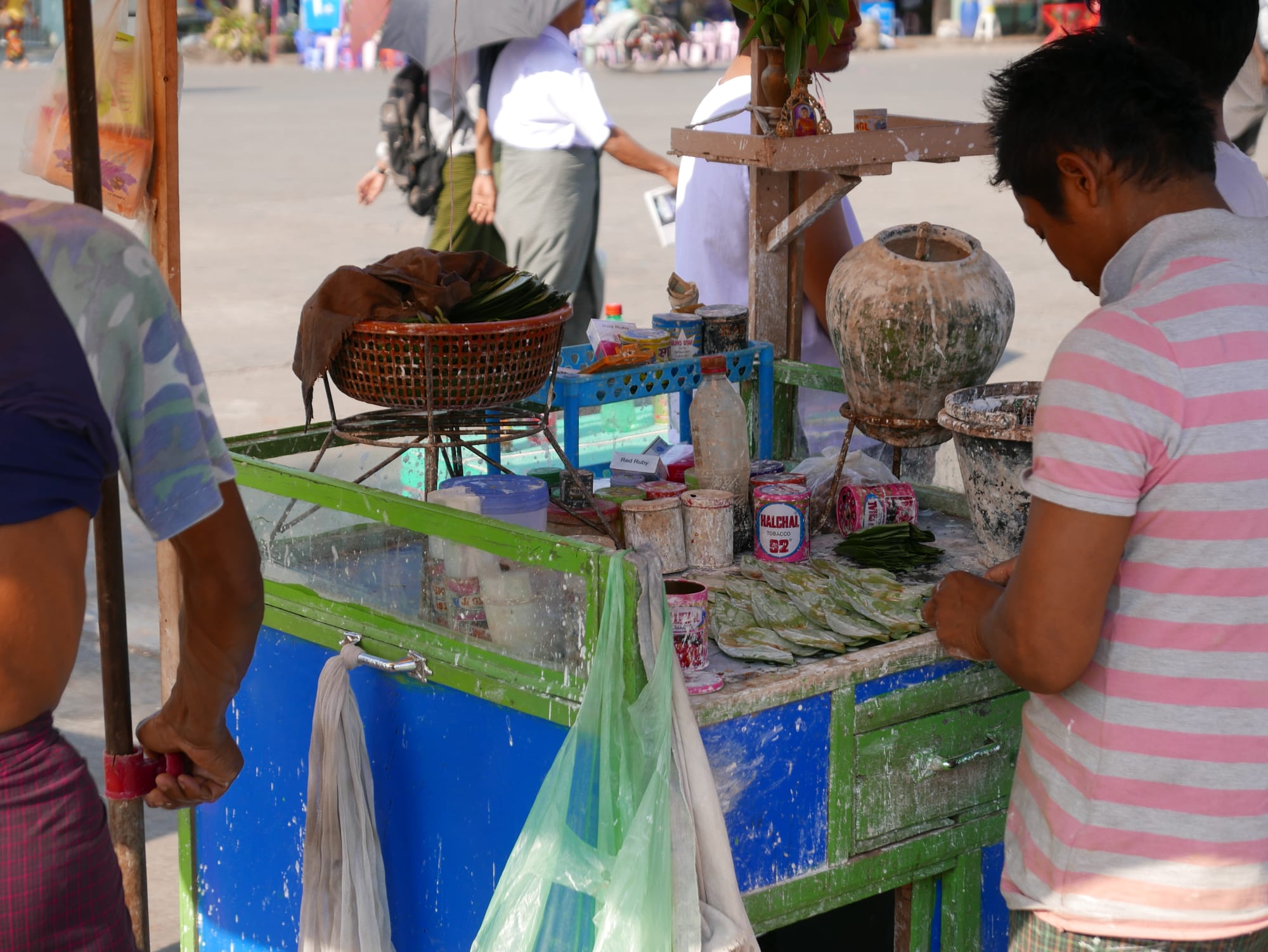
The betel quids are chewed, giving the chewer a ‘lift’, like a very strong cup of coffee.
Each quid costs around 5 cents US, and users can get through a significant number daily, sometimes ten or more. Chewing the quids can lead not only to stained gums and teeth but also to oral cancer.
The active ingredient in the nut and the leaf is arecoline, similar to nicotine. The lime in the quid keeps the chewer’s mouth alkali so that the arecoline can enter the bloodstream.
And, no, I didn’t try one.


